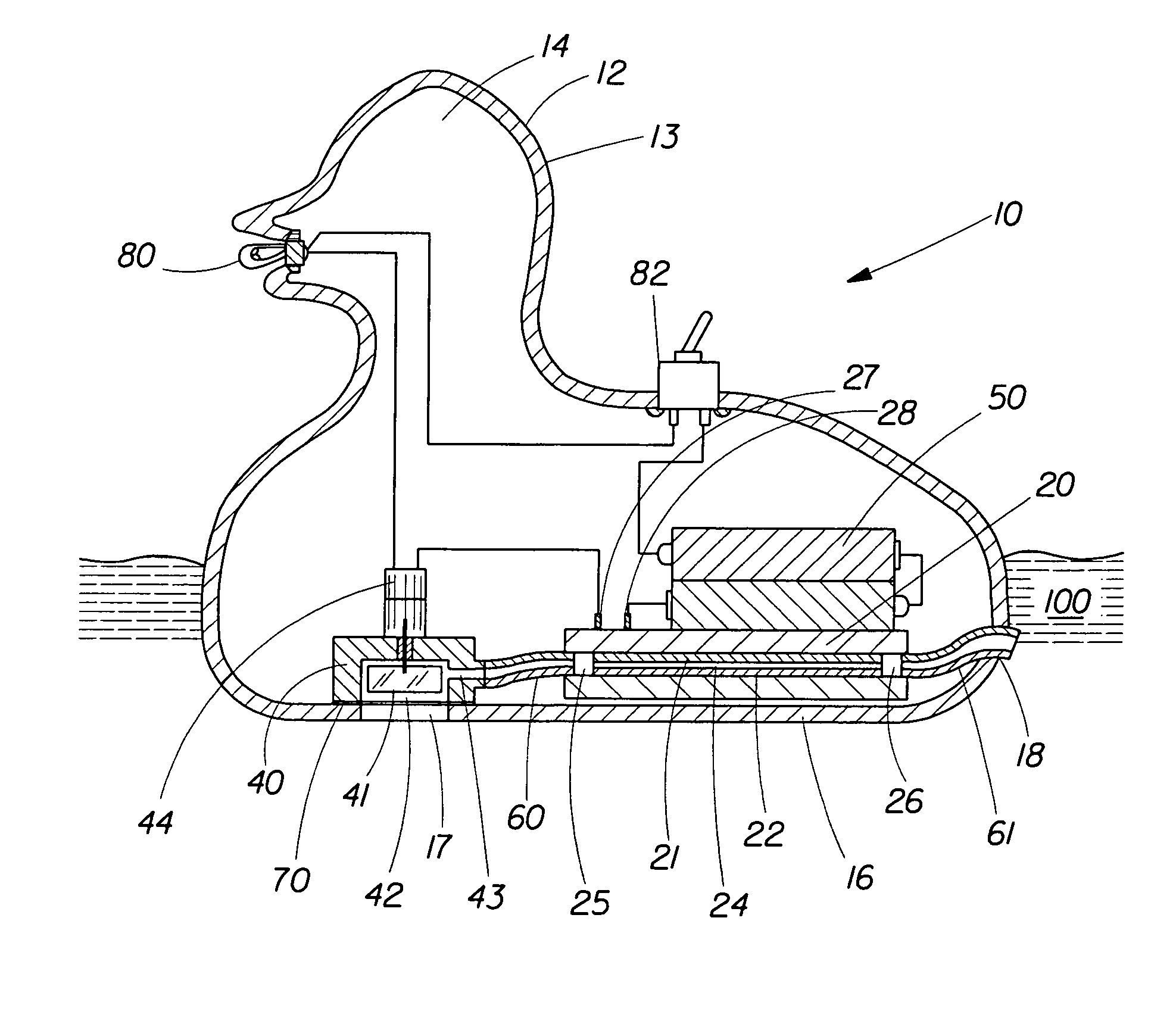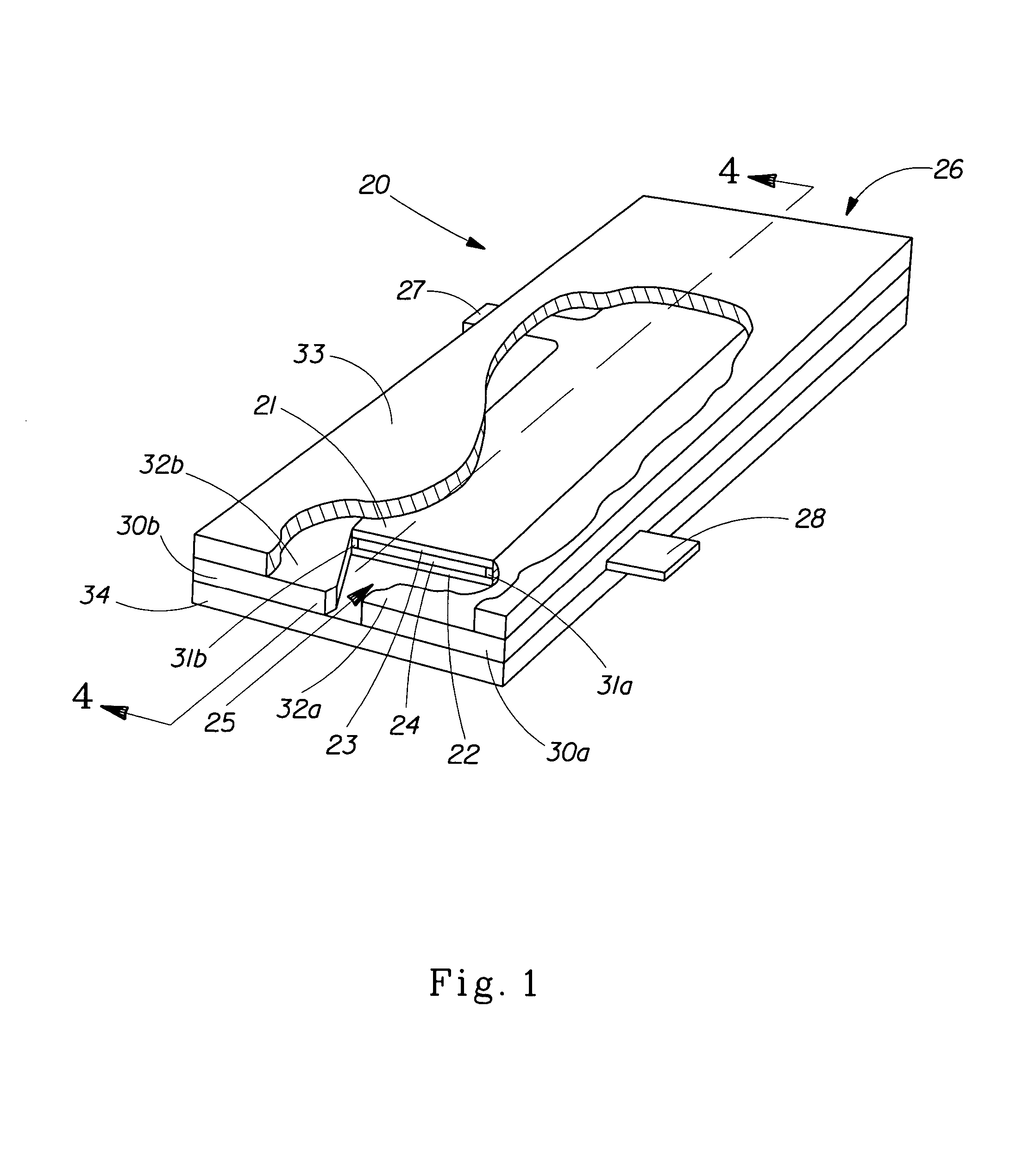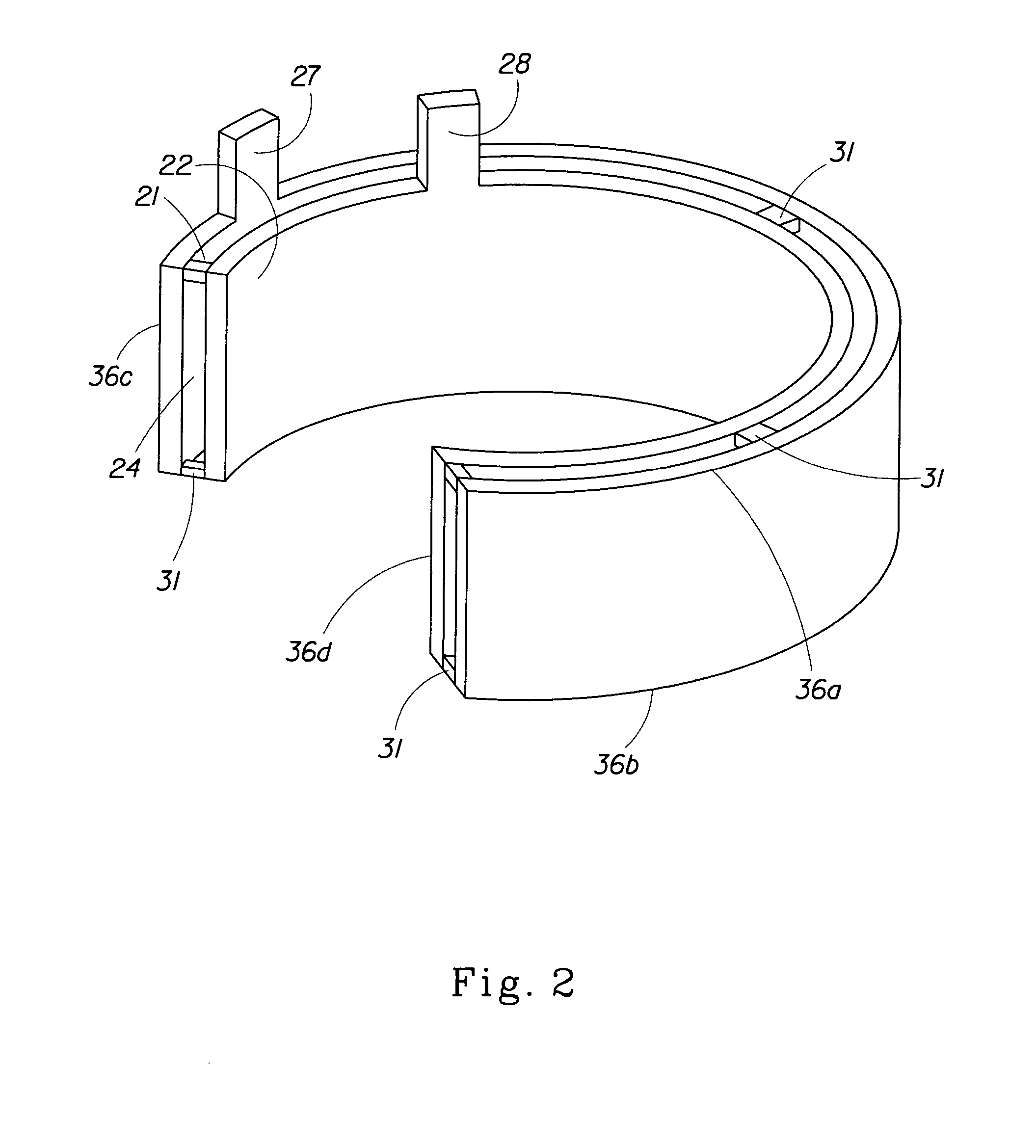Electrolysis device for treating a reservoir of water
- Summary
- Abstract
- Description
- Claims
- Application Information
AI Technical Summary
Benefits of technology
Problems solved by technology
Method used
Image
Examples
embodiment i
An example of a self-contained, self-propelled electrolysis device is shown in cross section in FIG. 4. The duck electrolysis device 10 has a buoyant body 12 made into the form of a duck. The body has a substantially continuous outer surface 13 and a hollow interior 14. The body is molded from a rubberized PVC plastic. Within the interior of the body, mounted to the base 16 is an electrically-driven motor 44 (model RE260, LMP Inc., Jersey City, N.J.) that drives a pump 40 having impeller 41 (model IMPELR-S, Swampworks Mfg., Springfield, Mo.). The inlet 42 to the pump is positioned directly against an inlet opening 17 in the base 16 of the body to provide fluid communication between the reservoir 100 of water and the inlet 42 to the pump. The periphery of the pump outboard of the pump inlet is sealed to the base 16 with a water-proof adhesive 70 to prevent any leakage of reservoir water into the body of the device. The discharge 43 of the pump is connected via ¼ inch Tygon tubing 60...
embodiment ii
An example of a self-powered self-contained electrolysis device with a close-spaced gap between the electrodes is shown in partial cross section in FIG. 5. FIG. 5 shows an electrolysis device 10 having a self-contained body 12 made into the form of a boat. The body is made from PVC plastic. Mounted on the exterior of the base 16 of the self-contained body is an electrolysis cell 20 of the type shown in FIG. 3 (shown in FIG. 5 in cross section taken through line 5-5 of FIG. 3), having a planar anode plate 21 and a confronting planar cathode plate 22. The anode plate is made of titanium with an iridium oxide coating (0.4 microns thick) and measuring 7.2 cm long and 2.7 cm wide. The cathode plate is made of stainless steel (1.45 mm thick), having the same length and width dimensions as the anode. The cathode plate have a constant gap spacing of 0.40 mm between the two electrodes. An electrical current supply 50 consisting of two “AA” alkaline batteries (each 1.5V) is positioned inside...
PUM
 Login to View More
Login to View More Abstract
Description
Claims
Application Information
 Login to View More
Login to View More - R&D
- Intellectual Property
- Life Sciences
- Materials
- Tech Scout
- Unparalleled Data Quality
- Higher Quality Content
- 60% Fewer Hallucinations
Browse by: Latest US Patents, China's latest patents, Technical Efficacy Thesaurus, Application Domain, Technology Topic, Popular Technical Reports.
© 2025 PatSnap. All rights reserved.Legal|Privacy policy|Modern Slavery Act Transparency Statement|Sitemap|About US| Contact US: help@patsnap.com



